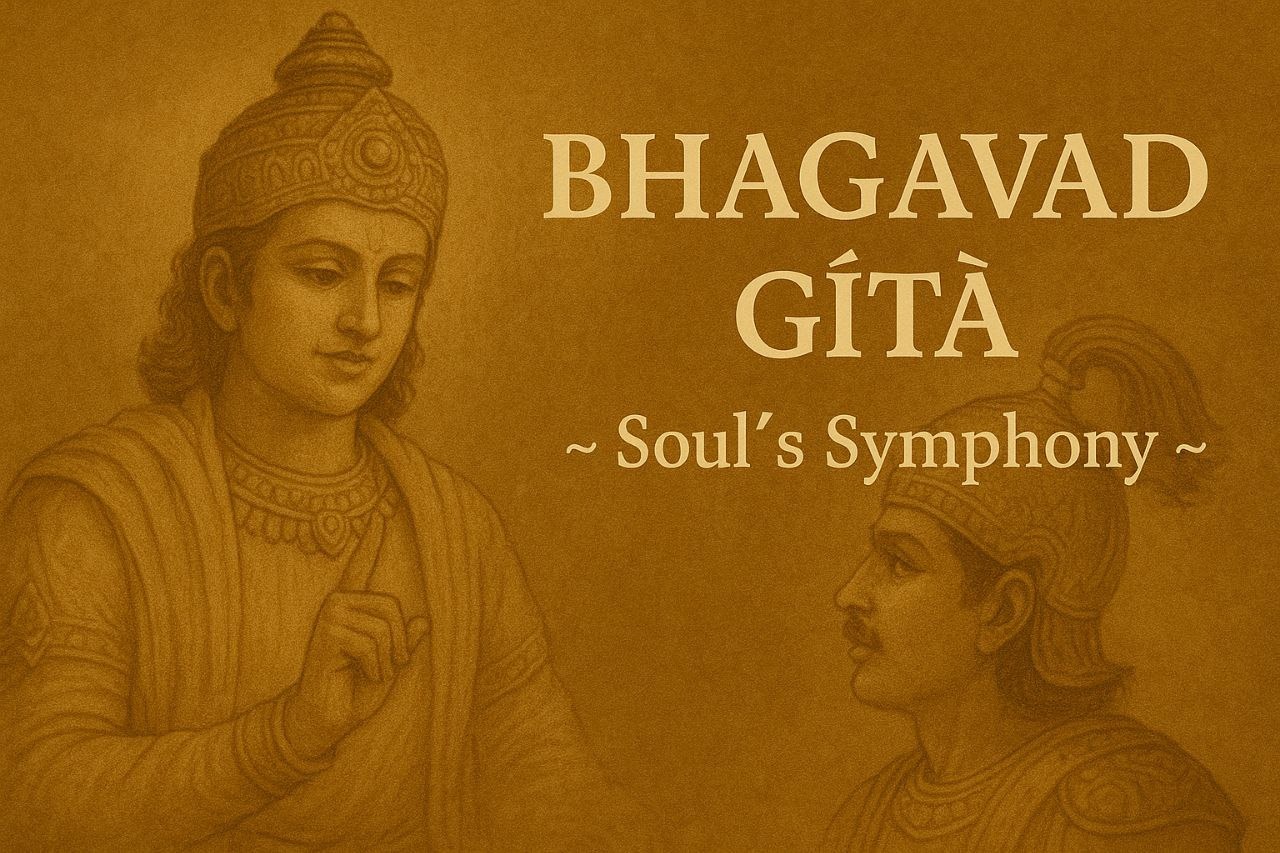Bhagavad Gītā ~ Soul’s Symphony

In the majestic verse often called the Song Celestial, the Bhagavad Gītā unfolds as a divine symphony, weaving together themes of duty, devotion, wisdom, and ultimately, the eternal harmony of the soul. Far from being a mere philosophical text, it is a dynamic melody that resonates with the inner rhythm of every human heart.
“The Gītā is not a book, it is a symphony of the soul, inviting every seeker to hear the divine within.” ~ Adarsh Singh
🌟 The Soul as Eternal Witness
Krishna begins by guiding Arjuna through the realization that the true Self (Ātman) is unborn, eternal, and indestructible:
“For the soul there is neither birth nor death at any time... He is unborn, eternal, constant, ancient... He is not injured when the body is slain.” (Bhagavad Gītā 2.20)
This inner harmony, the unchanging Self amidst transformation, is the first movement in the soul’s symphony.
🔄 Transcending Change: Life as Melody
Just as seasons shift or garments are changed, the soul inhabits one body after another:
“Just as a person sheds worn-out garments and wears new ones, so does the embodied soul cast off old bodies and enter others anew.” (Bhagavad Gītā 2.22)
The wise perceive this cycle as a cosmic rhythm, part of the grand composition of life.
🧭 The Triad of Self, Nature, and the Divine
Gītā presents the soul as part of a triad: Jīvatma (individual soul), Prakriti (material nature), and Parmatman (Supreme Soul):
“This inner self is a reflection of both matter and Divine, capable of navigating from individuated consciousness to universal harmony.”
This interplay of layers is the subtle harmony that gives depth to existence.
🧘♂️ From Discord to Divine Counsel
Arjuna’s inner conflict becomes a universal motif, the soul’s battle with doubt, attachment, and identity. Krishna offers timeless guidance on aligning action (Karma Yoga), devotion (Bhakti Yoga), knowledge (Jnana Yoga), and focus (Dhyana):
“Cut this doubt-born confusion at its root with the sword of knowledge. Arise, O descendant of Bharata!” (Gītā 4.42)
Thus begins the transformation from discord to spiritual clarity, as the heart and mind attune to the divine theme.
🎵 Final Movement: Union Through Yoga
As the symphony crescendos, the individual soul realizes oneness with the Supreme:
The soul is immutable amidst body and mind changes
Ultimate liberation (moksha) is the melody of unbroken harmony
Through devoted service, wisdom, and surrender, one merges into the cosmic orchestra of being
Arjuna’s surrender to Krishna is not defeat, it is the culmination of the soul recalling its eternal symphony.
“When your soul harmonizes with the divine melody, every note of existence becomes cosmic music.” ~ Adarsh Singh
🎼 Why the Gītā Remains Timeless
1. Life-as-music metaphor: It treats soul, duty, and evolution as harmonics, not rules.
2. Practical guidance: Yoga paths for modern turmoil, interior battles become opportunities for alignment.
3. Universal resonance: The thematic tone of conflict-to-clarity echoes across all human cultures and eras.
Embrace Your Soul’s Symphony
The Bhagavad Gītā is not just read, it’s sounded. Its verses are vibrations that awaken the singer within you. As you progress from Arjuna’s fear to Krishna’s counsel, you rediscover your mind, heart, and Self as instruments in the divine symphony.
“Let the Gītā's music play within you, not as doctrine, but as devotion. And let your soul become the symphony of the divine.” ~ Adarsh Singh
Wed Jul 23, 2025
